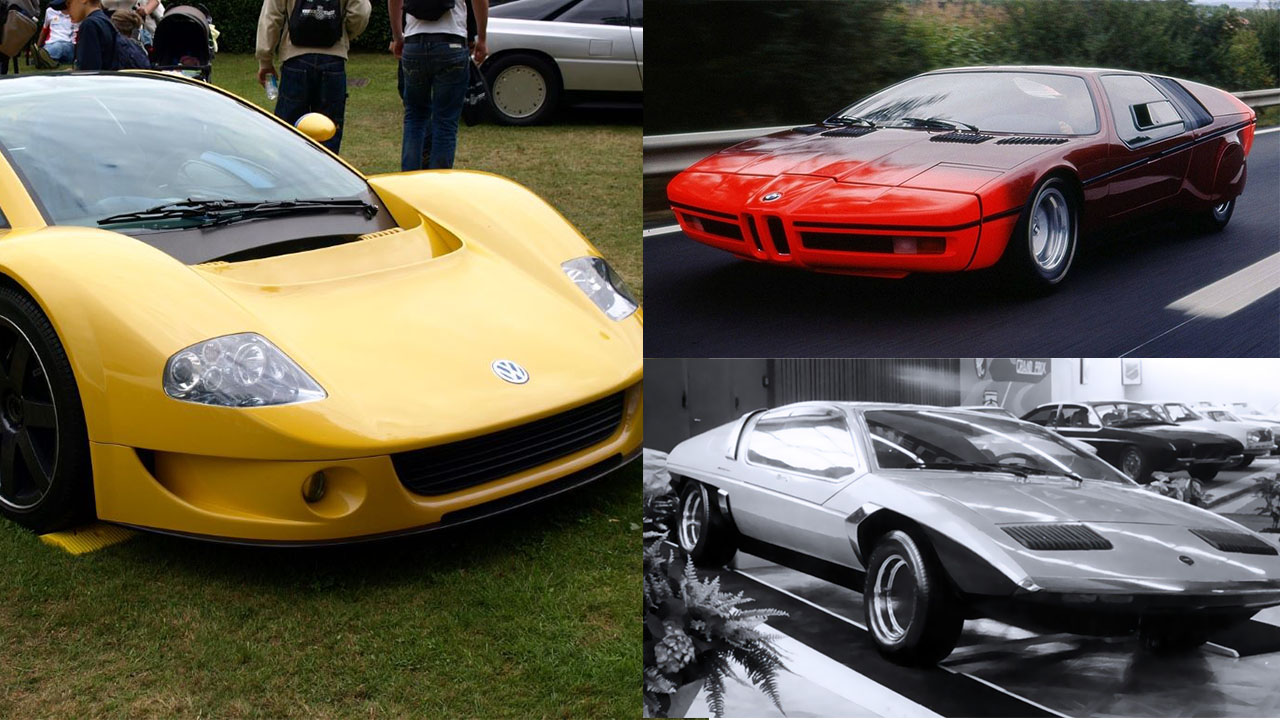After last week discussing a trio of new retro-inspired French concept cars, one of my ‘car’ friends sent me a quick note of thanks.
He mentioned that he had completely forgotten about the elegant all-electric 504 Coupé Concept that Peugeot revealed at the 2018 Paris Motor Show.
He also expressed his disappointment that Renault never produced a few versions of its mid-engined 4CV ‘Fiftie’ concept tribute.
Sharing a mutual appreciation for characterful French vehicles and mid-engined sports cars, my friend was curious to know which mid-engined prototypes I personally believed should have made it to production.
His thought-provoking question immediately set my mind racing. Relying on memory and a nearby scrap of paper, I quickly jotted down a list of 12 mid-engine concepts that, in my view, would have made incredible production sports cars.
Without following any specific ranking, here are the dozen mid-engined prototypes that came to mind.
Each was selected based on its style and a certain degree of practicality that could have made it feasible for production. Unfortunately, none of them ever saw the light of day in showrooms, which is a real shame.
1. 1989 Isuzu 4200R
A rare four-door mid-engined concept, the Isuzu 4200R immediately captivated me with its sleek and flowing race-inspired lines when I first saw it at the 1989 Tokyo Motor Show.
An unlikely show-stopper, this elegant and unforgettable Isuzu was designed by British stylist Julian Thompson, who later became the creator of the Series 1 Lotus Elise.
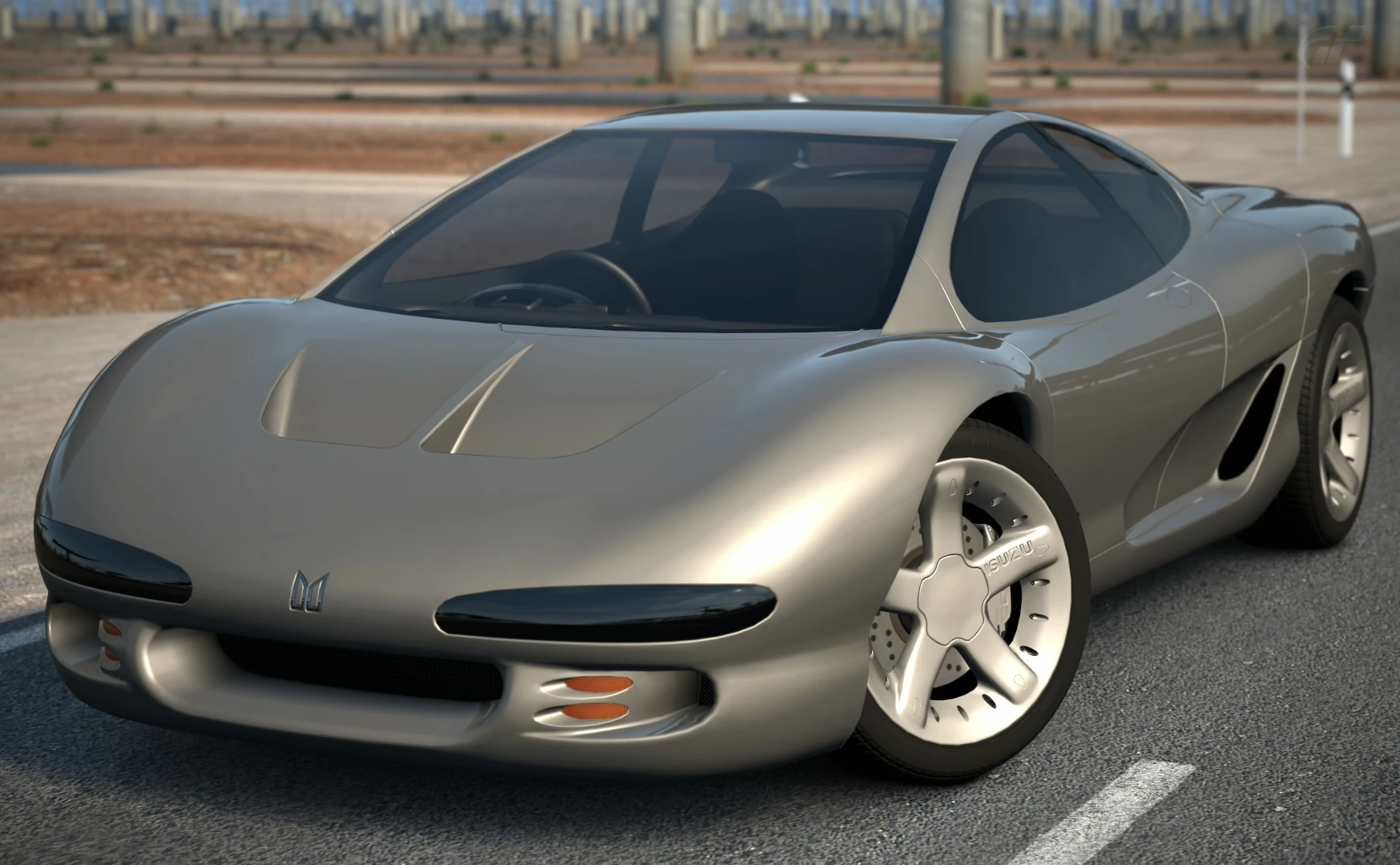
The 4200R highlighted the close relationship at the time between Isuzu and Lotus, with the latter using an Isuzu Gemini engine in its then-new front-wheel-drive Elan M100.
The long and low four-seater 4200R prototype was powered by a mid-mounted 4.2-litre DOHC 32-valve V8, which was sourced from an Isuzu truck.
Regrettably, the 4200R never reached production, as Isuzu abandoned passenger car manufacturing a few years later to focus exclusively on building light commercial vehicles and heavy trucks.
2. 1984 Peugeot Quasar
Having relied on Pininfarina to design all of its production cars since the mid-1950s, Peugeot took a bold step in 1984 by introducing the Quasar concept its first post-war, self-styled sports prototype.
Created in Peugeot’s own design studio by its chief stylist, Gérard Welter, with an interior crafted by former Mercedes and BMW designer Paul Bracq, the extravagant Quasar took the public by surprise.
It was a stark contrast to Peugeot’s traditionally conservative and sober design language.
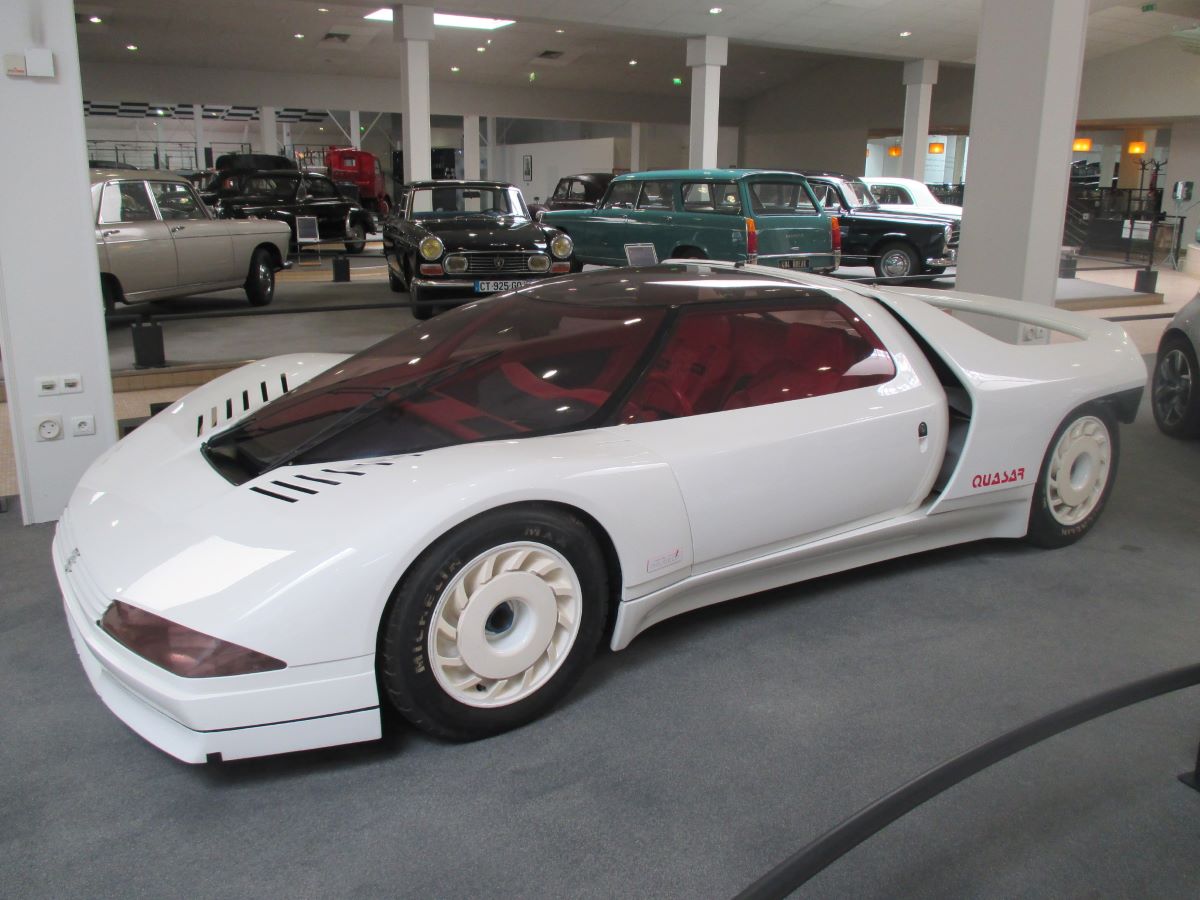
With a wild red and blue interior to match its striking exterior, the Quasar featured mechanicals derived from the Peugeot 205 T16, the car that clinched the World Rally Championship titles in 1985 and 1986.
Welter faced the delicate task of informing a stunned Pininfarina that Peugeot would be presenting a concept car of its own making.
The mid-engined Quasar was later followed by the equally dramatic Peugeot Proxima and Oxia concepts in 1986 and 1988, respectively.
These visionary prototypes foreshadowed Peugeot’s eventual triumph at the 24 Hours of Le Mans in 1992 with the 905.
3. 1997 Volkswagen W12
Volkswagen stole the spotlight at the 1997 Tokyo Motor Show with its striking W12 supercar coupé. Presented as a one-off, VW stated that it would assess public interest in the model and might consider producing a limited number if demand justified it.
Unfortunately, it did not. The prestige of the VW badge alone was not enough to support the high price point the car would have required.
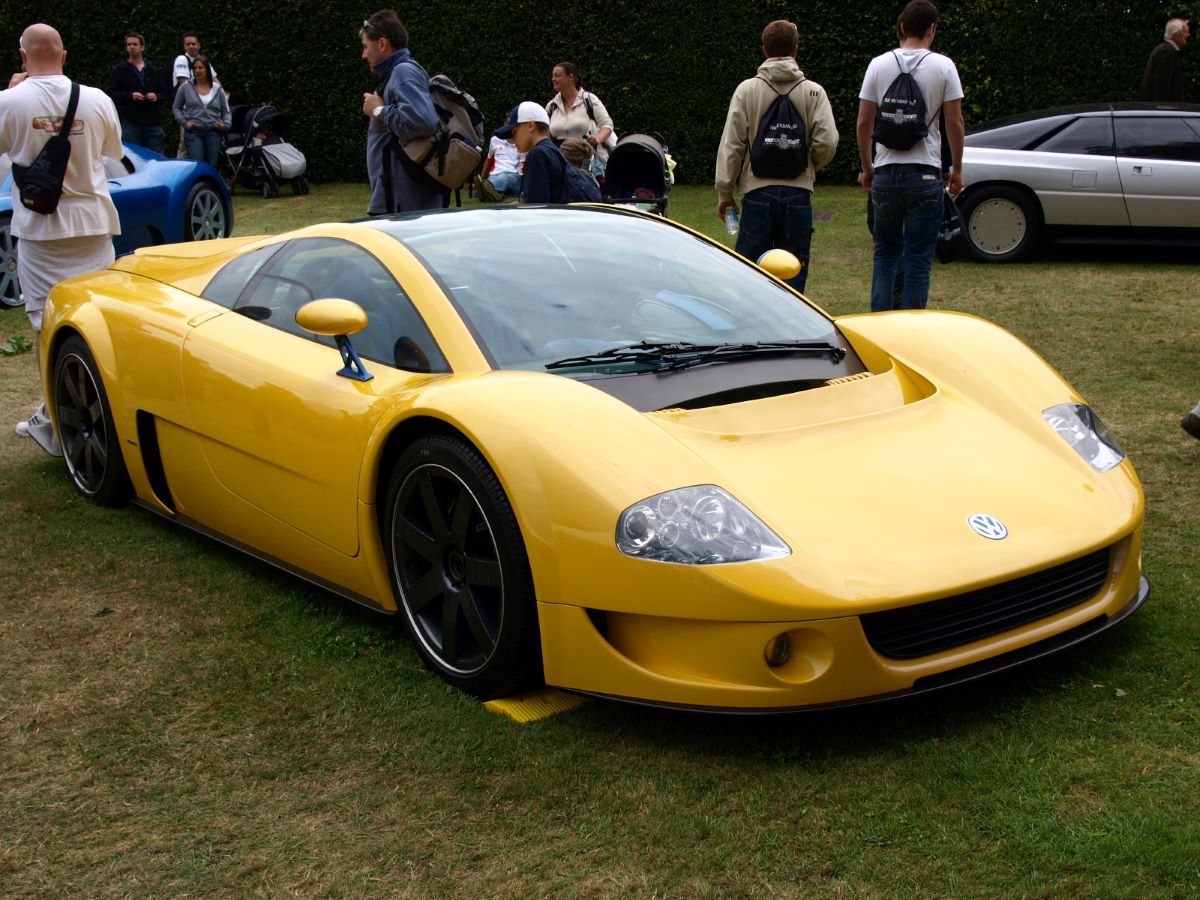
Even a subsequent W12 convertible prototype failed to generate sufficient interest, despite receiving widespread praise from the automotive press.
Developed in collaboration with ItalDesign, VW engineered the W12 by combining two of its V6 engines to create a powerful W12 motor.
The car later went on to set several speed records at Italy’s Nardò track, showcasing the impressive capabilities of its unique powertrain.
4. 1998 Fioravanti Ferrari F100
Leonardo Fioravanti, who had designed several iconic Ferrari models during his tenure as Head of Design at Pininfarina including the revered Dino 206/246 and the legendary 365 GTB/4 ‘Daytona’ continued to leave his mark on automotive design even after departing from Pininfarina.
In 1998, he unveiled the F100, a stunning concept created to commemorate the 100th anniversary of Enzo Ferrari’s birth.
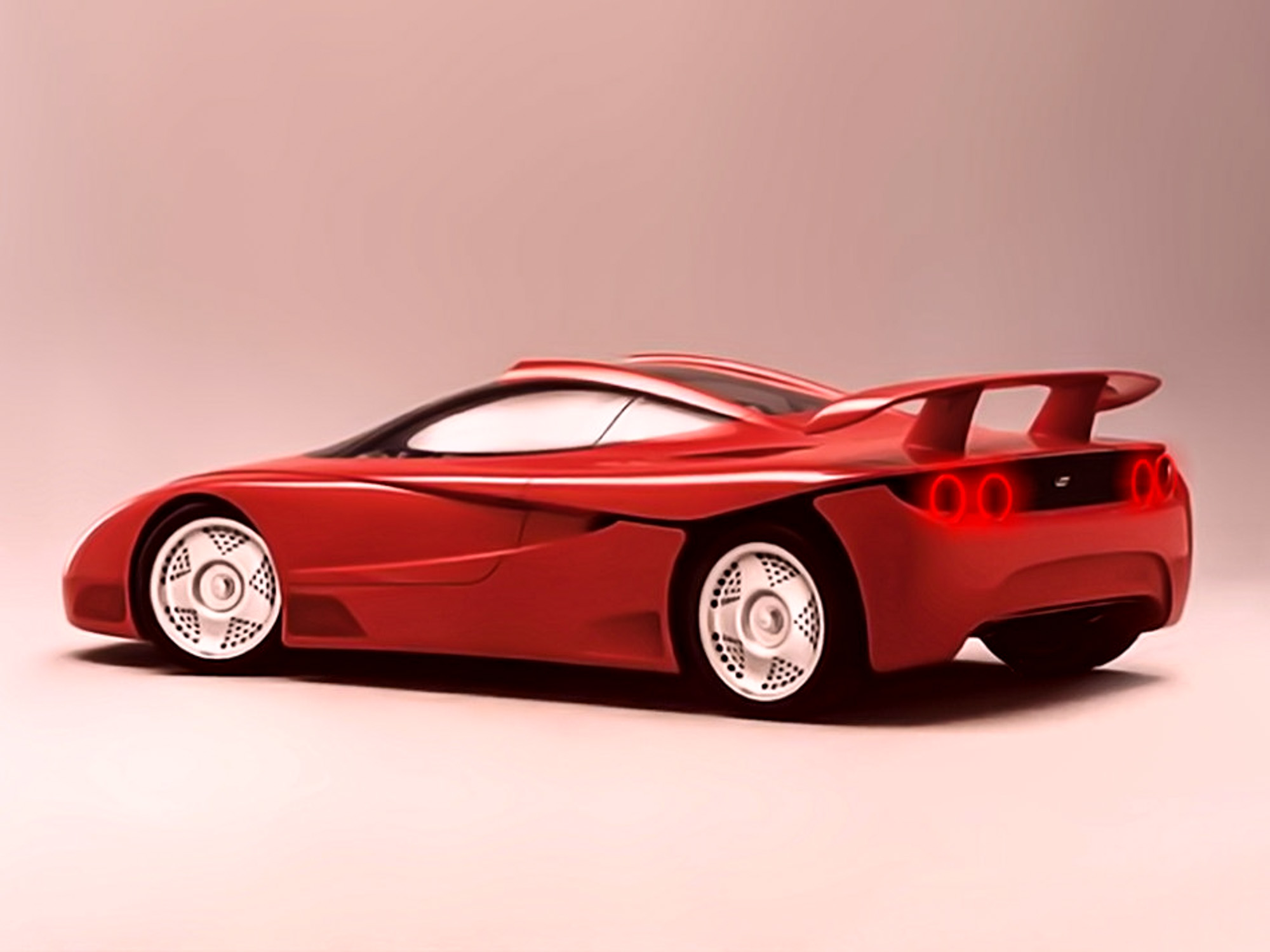
The exquisitely sculpted one-off F100 GT was constructed for Fioravanti by renowned Turin-based coachbuilder Cecomp.
The concept was envisioned to be powered by a mid-mounted V10, further emphasizing its performance-focused design and tribute to Ferrari’s rich legacy.
5. 1981 Ghia AC 3000ME
After its acquisition by the Ford empire in 1974, the Turin-based design house and former coachbuilder Ghia became exclusively focused on Ford-based concepts.
Both Dearborn and Dagenham utilized Ghia as an in-house design studio for alternative vehicle designs. Among these was the 1981 Ghia reimagining of the Ford Granada V6-powered AC 3000ME.
The origins of the mid-engined AC traced back to 1972 when former Lola designers Peter Bohanna and Robin Stables first introduced a sleek coupé powered by a mid-mounted Austin Maxi 1500 engine.
AC took notice of the prototype and swiftly secured the production rights, upgrading the mechanicals to a 3.0-liter Ford V6.
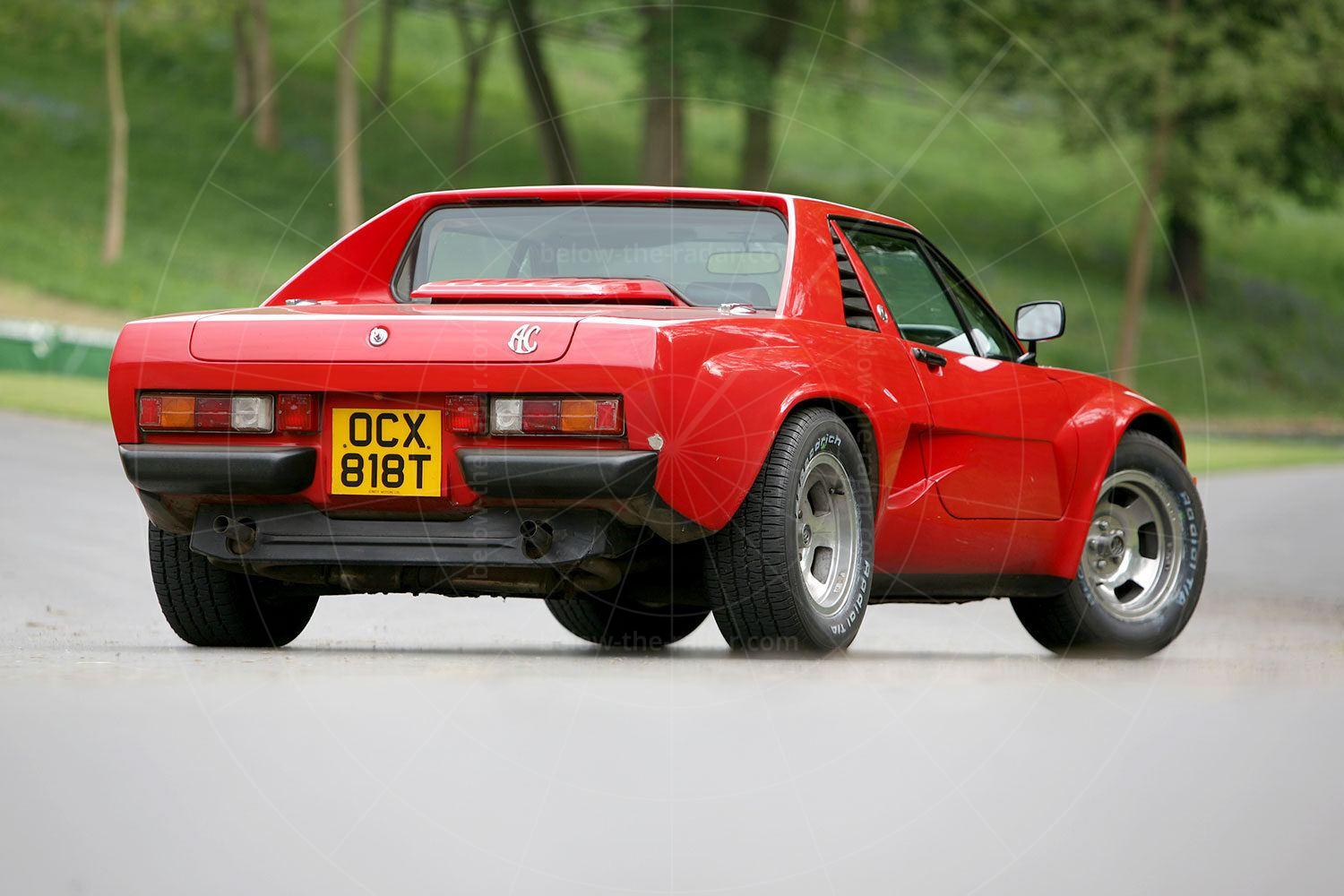
The car debuted as the AC 3000ME at the 1973 Earls Court Motor Show, but AC faced significant challenges in getting the GRP-bodied two-seater homologated. As a result, production and initial customer deliveries were agonizingly delayed until 1979.
By the time the car finally reached buyers, many prospective AC customers had lost patience and instead opted for the Lotus Esprit.
While the 3000ME remained visually appealing, it was beginning to appear outdated by the early 1980s.
In response, Ghia stepped in to refresh the design, giving the car a more rounded and refined aesthetic.
Though there was discussion about a limited production run of the Ghia version, it never materialized, leaving the redesigned 3000ME as nothing more than a one-off concept.
6. 2010 Renault DeZir
Unveiled at the 2010 Paris Salon, the breathtaking mid-engined electric concept DeZir was designed by ex-Saab stylist Antony Lo under the leadership of Laurens van den Acker.
The car featured an unconventional door configuration its driver’s door opened in a scissor-style fashion, while the passenger door was a rear-opening suicide type.
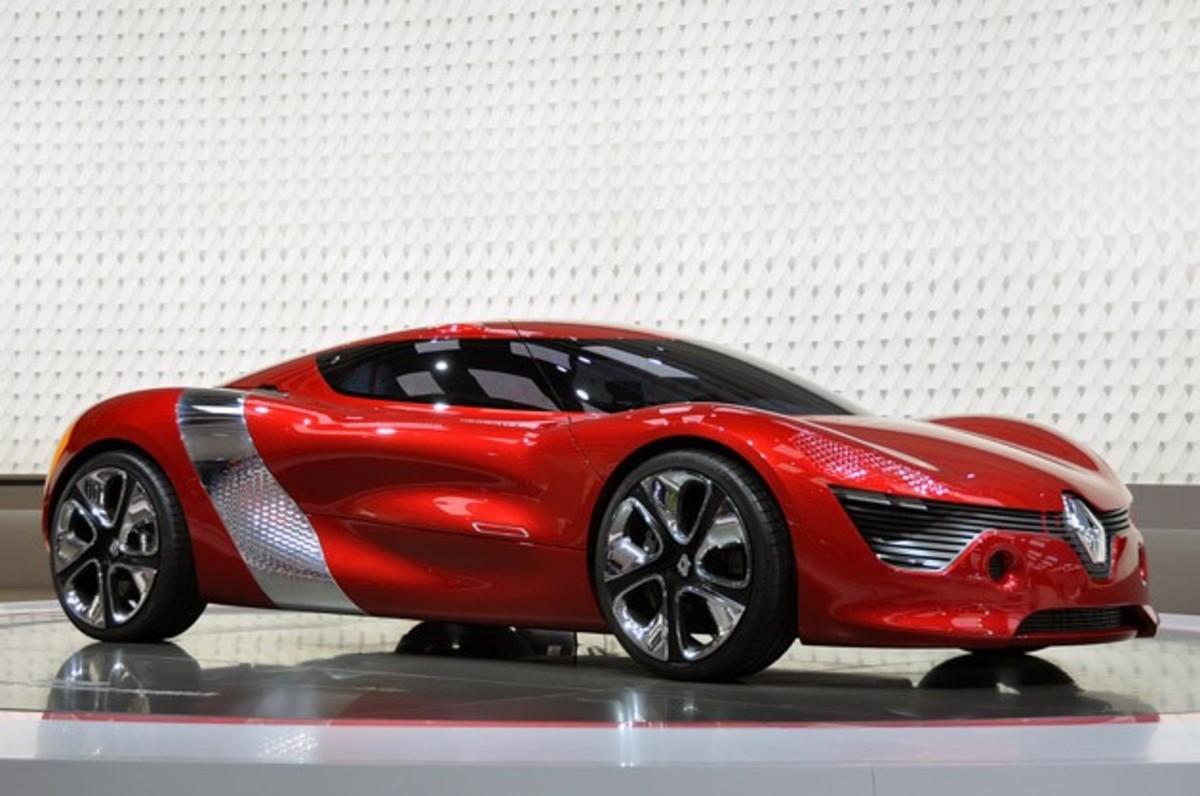
Visually, the DeZir bore a strong resemblance to Lo’s earlier Saab Aero X concept from 2006 and served as a subtle introduction to Renault’s revival of the Alpine sports brand.
The prototype was said to produce a respectable 152PS (112kW), which, combined with its lightweight construction, hinted at promising performance.
However, as expected, the DeZir remained purely a concept, with no plans for a production version.
7. 1985 MG EX-E
An unexpected showstopper at the 1985 IAA Frankfurt Motor Show, the mid-engined MG EX-E dazzled German audiences, serving as a powerful statement of renewed confidence for Austin Rover.
With MG positioned as a key sub-brand, the EX-E marked a fresh start after years of stagnation under British Leyland (BL) and its various iterations.
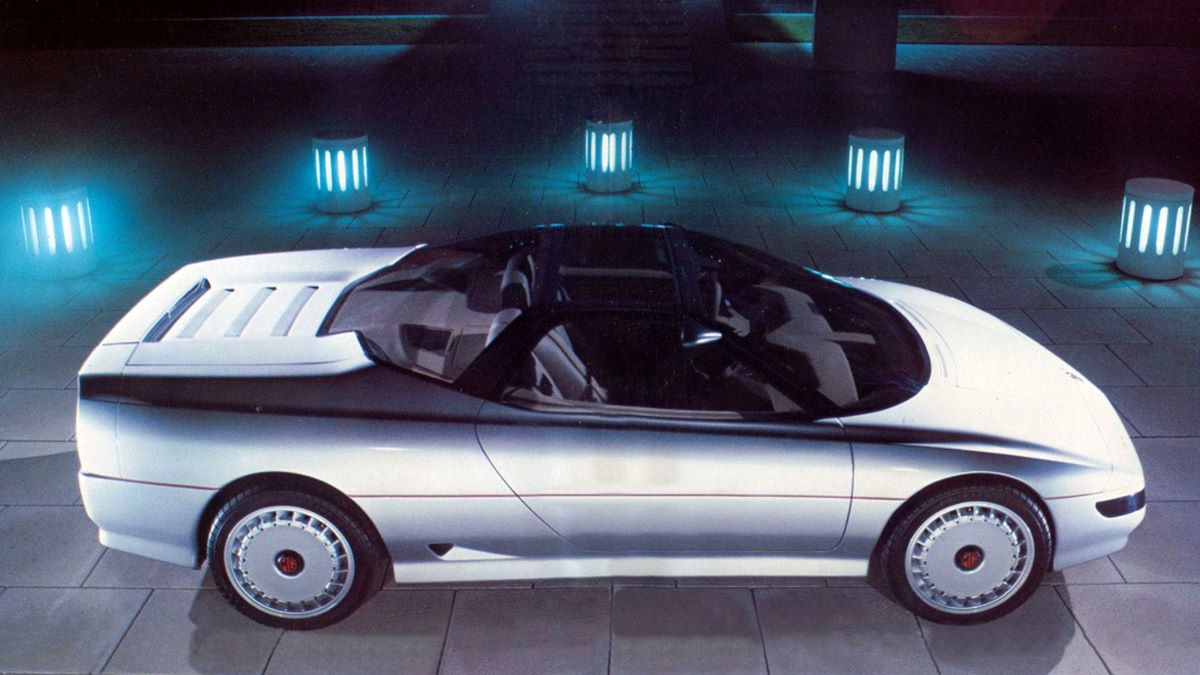
Preceding the popular mid-engined MG F and MG TF, the striking EX-E was crafted under the leadership of new Design Director Roy Axe.
Built on the mechanical foundation of the Group B MG Metro 6R4, the concept featured a lightweight combination of aluminum and plastic.
Its design also incorporated a removable targa-style roof and a cutting-edge fighter jet-inspired leather interior, making it one of the most forward-thinking MG prototypes of its time.
8. 1972 BMW Turbo
Introduced by BMW as part of its involvement in the 1972 Munich Olympic Games, the dramatic Turbo prototype was the Bavarian automaker’s first-ever mid-engined project.
Designed by French-born Paul Bracq, BMW’s head of design at the time, the Turbo was conceived as a showcase of the company’s technological advancements.
Powered by a turbocharged four-cylinder engine, the prototype served as a preview of the production 2.0-liter 2002 Turbo, which would debut in 1973.
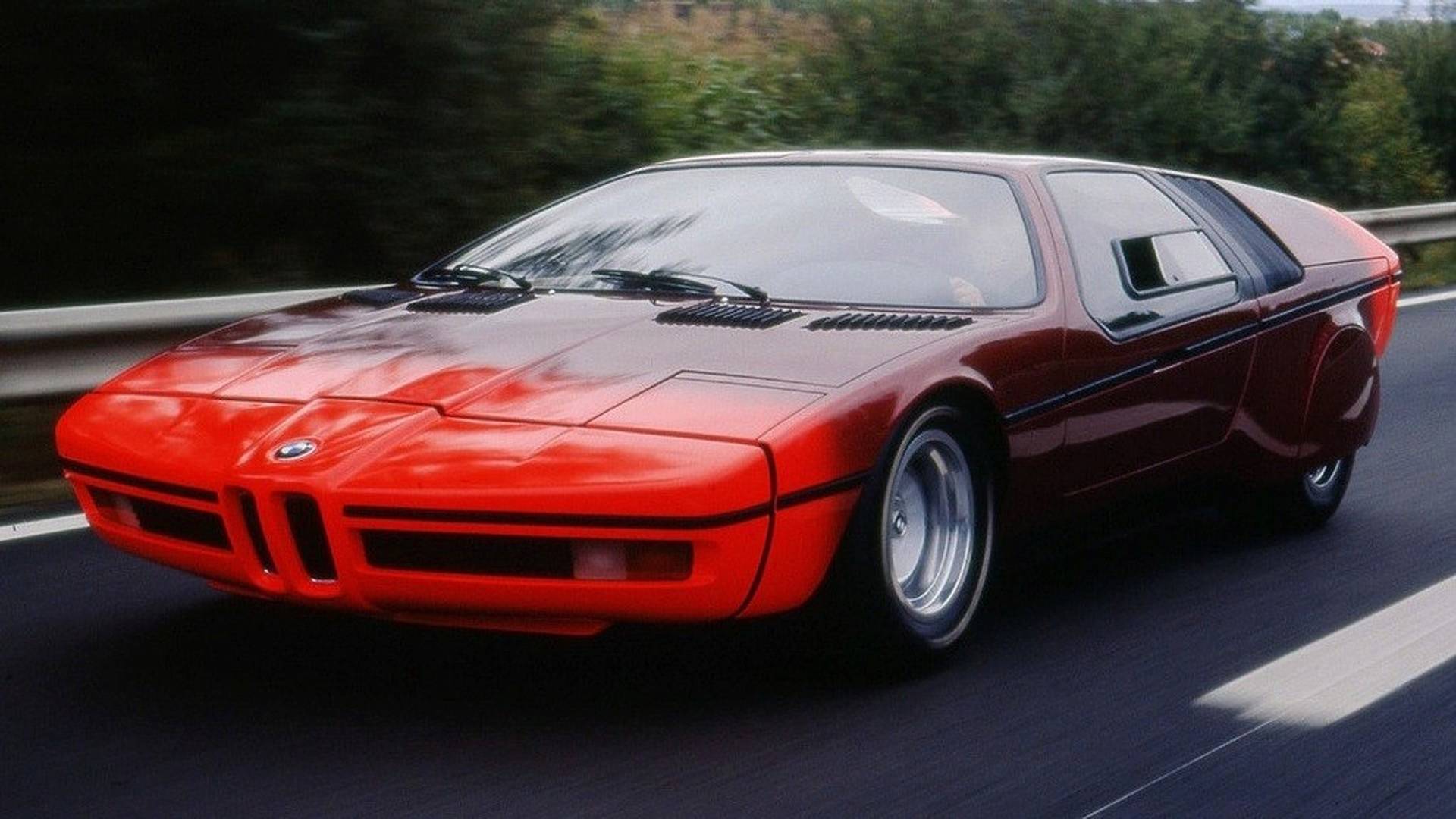
The Bracq-designed Turbo also pioneered several safety innovations, including front and rear deformable structures and integrated roll-over protection.
To maximize visual impact, BMW outfitted the concept with gullwing doors and an eye-catching paint scheme that transitioned from fluorescent orange to deep red.
While the Turbo itself never reached production, several of its design elements were later incorporated into the mid-engined BMW M1, which launched in 1978.
9. 2002 Cadillac Cien
Building on a legacy of remarkable concept cars dating back to the 1950s, General Motors unveiled the Cadillac Cien coupé in 2002 to commemorate the brand’s centenary its name, “Cien,” meaning “one hundred” in Spanish.
Inspired by the F-22 Raptor fighter jet, the mid-engined V12-powered Cien carried Cadillac’s signature razor-sharp design language, which was also present in its production models.
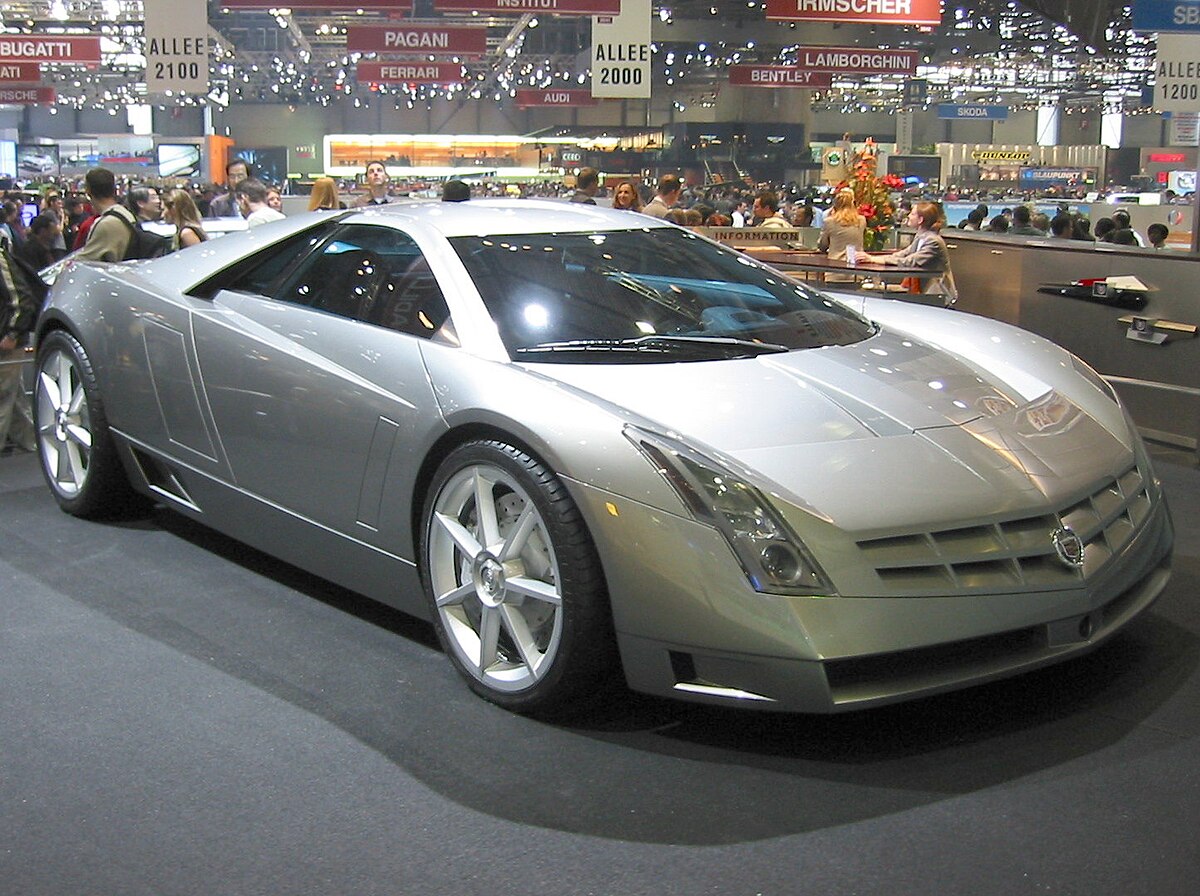
The styling was led by British designer Simon Cox, formerly of Lotus, while engineering expertise came from Banbury-based Prodrive.
The strikingly low-slung coupé featured an advanced aerogel composite body and incorporated active aerodynamic aids to enhance performance.
10. 1999 Bentley Hunaudières
The Bentley Hunaudières remains the first and, so far, only mid-engined prototype from the British marque.
Introduced in 1999, the sleek and aerodynamic concept was designed to celebrate Bentley’s long-awaited return to Le Mans, culminating in its 2003 victory at the legendary endurance race.
Styled by Volkswagen’s Wolfsburg design studio under the direction of Hartmut Warkuss, the Hunaudières was named after a famous straight on the Sarthe 24 Hours circuit.
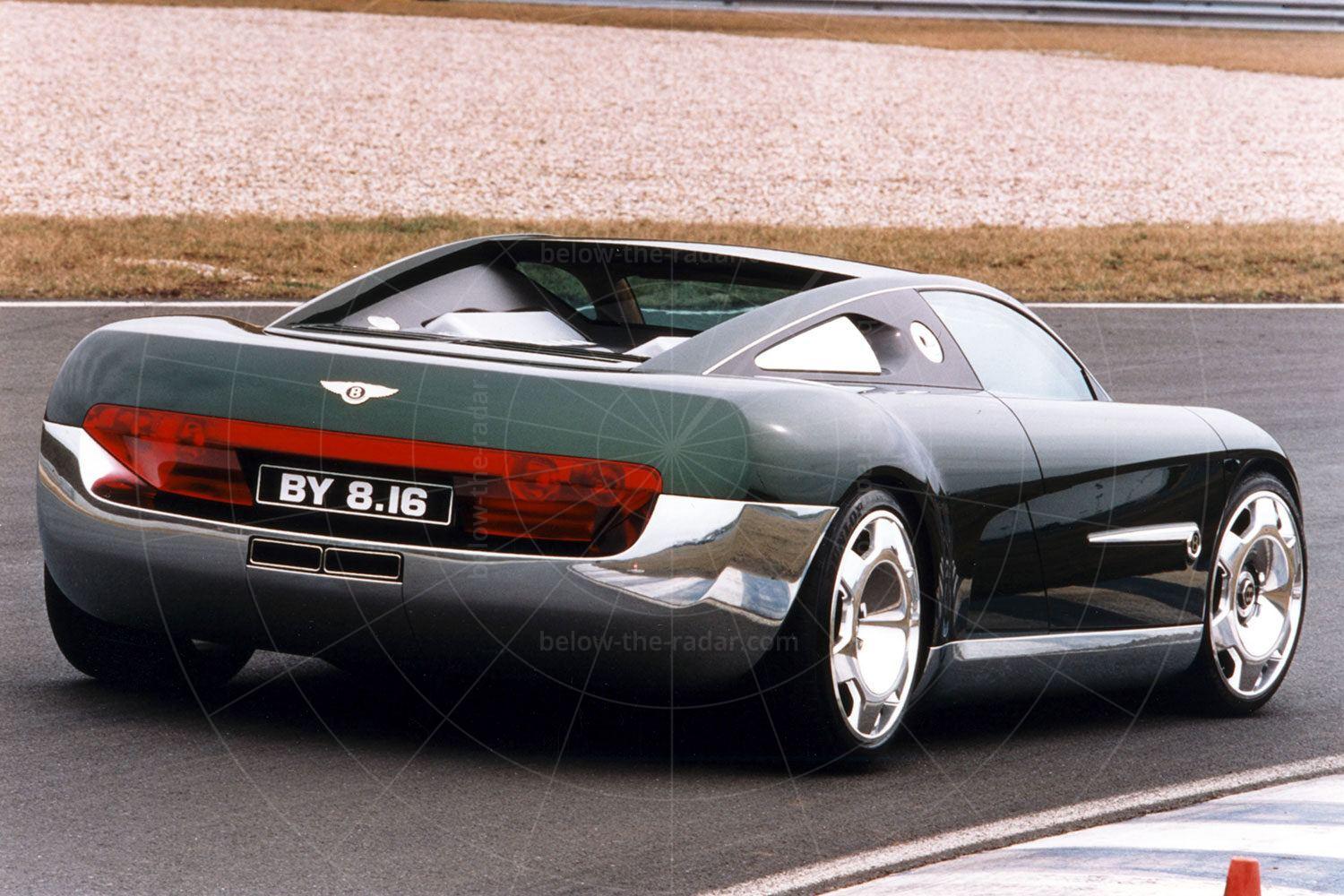
Underneath its elegant bodywork, the car shared its 8.0-liter V16 engine producing 632PS (465kW) with its Bugatti Veyron sibling.
While there were discussions about potential production, the concept ultimately remained a one-off showcase of Bentley’s engineering and design ambitions.
11. 1972 Michelotti Matra M530 Laser
Launched in 1967, the distinctive-looking Matra M530 was designed as an affordable mid-engined 2+2 aimed at younger drivers.
As pioneers of mid-engined production cars and future Formula 1 World Champions and triple Le Mans winners Matra equipped the M530 with a centrally mounted German Ford Taunus V4 engine, providing excellent handling and an impressively smooth ride.
However, its unconventional French styling deterred many potential buyers.
In an effort to refine the M530’s divisive appearance, renowned Italian designer Giovanni Michelotti reimagined the car in 1972, creating the Laser prototype with sleek gullwing doors and a more universally appealing design.
Despite his efforts, Matra declined to adopt the new look, as the company had already committed to launching the more stylish Bagheera as the M530’s successor a move that proved successful following the model’s 1973 debut.
The 1971 Matra Laser Concept, crafted by the renowned Giovanni Michelotti, stands as a remarkable and unique piece of early 1970s automotive design.
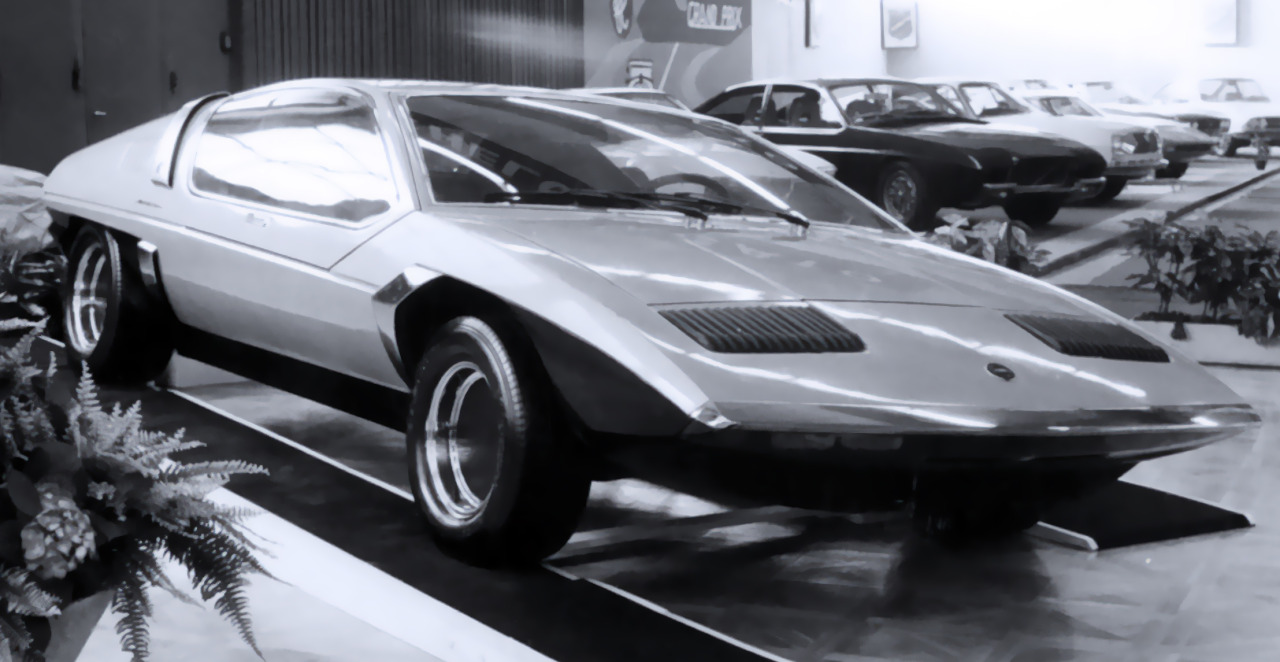
While it has not achieved the same level of mainstream recognition as some other concept cars from the era, its bold and futuristic styling continues to captivate enthusiasts even decades after its unveiling.
Matra, a French company with roots in aeronautics and defense, expanded into the automotive industry during the late 1960s. Following its victory in the 1969 Formula 1 Constructors’ Championship, the company turned its attention to producing road-going sports cars, most notably the M530.
Seeking a refreshed design for the M530, Matra enlisted the talents of Italian designer Michelotti—famous for his work with brands like Triumph, BMW, and Ferrari—which led to the development of the Matra Laser Concept in 1970.
Michelotti’s vision for the Laser was based on the M530’s chassis and retained its mid-engine configuration, which was highly regarded for its balanced handling.
The Laser embraced the angular, wedge-shaped aesthetic characteristic of many 1970s concept cars, exuding a futuristic appeal through its sharp lines and low-slung stance.
One of its most striking features was the set of gullwing doors, which not only enhanced the car’s exotic appeal but also facilitated easier entry and exit, particularly given its low height.
When it debuted at the 1971 Geneva Motor Show, the Laser was painted in an eye-catching yellow. By the time it appeared at the 1972 Montreal Auto Salon, it had been refinished in a more understated silver, demonstrating how different colors could alter its visual impact.
12. 1997 Rover Mini ACV30
In its continued efforts to develop a worthy successor to the classic Issigonis-designed Mini, Rover unveiled the ACV30 concept in 1997.
The name stood for “Anniversary Concept Vehicle,” marking 30 years since the original Mini Cooper’s third and final Monte Carlo Rally victory in 1967.
The ACV30 was an unconventional mid-engined Mini concept, utilizing the 1.8-liter mechanicals from the then-new MG F.
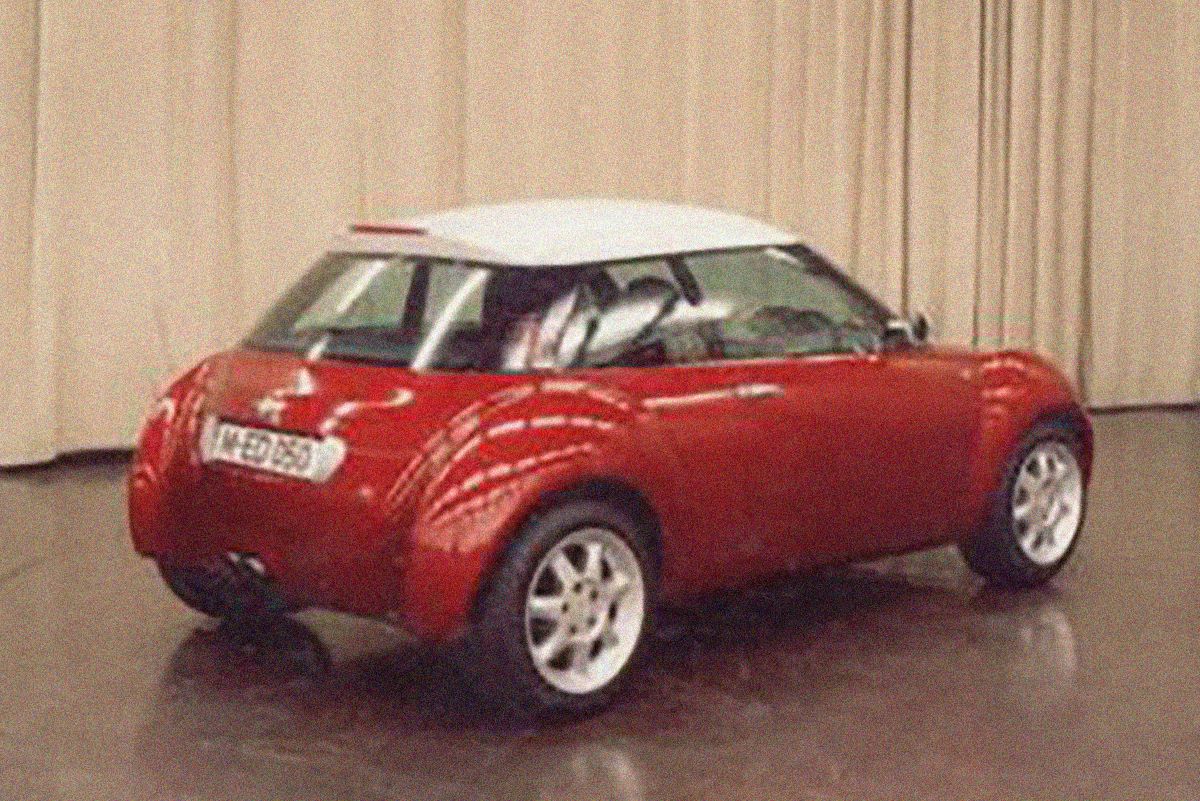
It was finished in a nostalgic red with a white roof, mirroring the livery of the legendary rally-winning Mini.
However, despite its intriguing design, the ACV30 was never seriously considered for production. Instead, Rover’s focus remained on the front-engined, front-wheel-drive new MINI hatchback, which debuted in 2000.
Like the other mid-engined concepts mentioned, the ACV30’s failure to transition from an ambitious prototype to a production vehicle remains a disappointment for passionate motoring enthusiasts.

